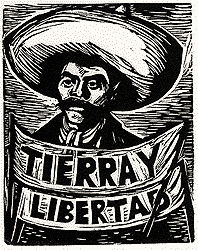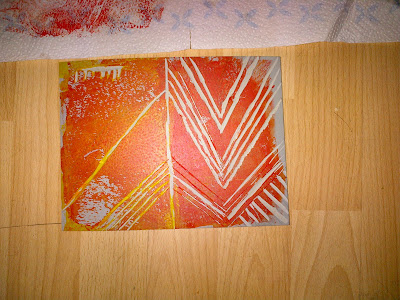In the beginning, before the printing press, printmaking was not considered an art form, rather a medium of communication. It was not till the 18th century that art prints began to be considered originals and not till the 19th that artists began to produce limited editions and to sign their prints along with the technical information necessary to authenticate the work.
Engraving goes back to cave art, executed on stones, bones and cave walls. The duplication of engraved images goes back some 3,000 years to the Sumerians who engraved designs on stone cylinder seals. Academics think that the Chinese produced a primitive form of print, the rubbing, as far back as the 2nd century AD. The Japanese made the first authenticated prints, wood-block rubbings of of Buddhist charms, in the late-middle eighth century.
mission.
chicken hawaks.
19th-century European and American Printmakers
The nineteenth century was one of the most dynamic periods in the history of Western printmaking.Prints – defined as works of art made in multiples (each called an impression) by pressing an inked block or plate bearing a design onto a support, typically paper – had been circulating in Europe since the early fifteenth century. These early prints were primarily woodcuts, engravings, and etchings depicting Christian subjects, characters and stories from classical mythology, scenic views, and reproductions of celebrated paintings and sculptures. During the nineteenth century, however, new subjects, styles, and techniques helped establish the modern impulse in prints.
Romantic innovators
The English poet William Blake has long been considered a pioneering figure in these developments, despite the fact that he was little known during his lifetime. Blake derived much of his subject matter from his unusual philosophical and theological beliefs and devised new printing processes and techniques, such as monotype and relief etching. Relief etching allowed Blake to self-publish illustrated books of his own poetry, with both words and images produced from the etching plates and watercolour added by hand (see Jerusalem, Plate 78). Blake’s more influential and successful contemporary, the Spanish painter Francisco de Goya y Lucientes, enjoyed the patronage of the aristocracy but looked to printmaking as an appropriate venue for creating images with a biting satirical edge, attacking the horrors of war, the Catholic Church, and conservative, stratified Spanish society. In his highly inventive series of etchings Los Caprichos(1799), Goya fully exploited the intaglio technique aquatint, which creates tonal qualities similar to wash drawings (see The Sleep of Reason Produces Monsters).| Francisco de Goya: The Sleep of Reason Produces Monsters, 1799 (New York, Metropolitan Museum of Art) |
images for history in printmaking....
diamond-sutra.
daumier- sauvant
The lithographic process, which is the only printmaking process whose origin is traceable, was stumbled upon by Alois Senefelder during the late 16th century. Literally meaning “stone writing,” Lithographs are produced by drawing with a greasy pencil on limestone and are then produced based on the idea that oil and water don’t mix. Lithography reached commercial success soon after its discovery and became popular with artists due to its integrity to the original image. A lithographic print is the exact replica of the drawing the artist places upon the stone. Artists like Honore Daumier utilized Lithography in creating satiric illustrations and political cartoons.
In Japan... ukiyoe.
Printmaking developed through contact with China. By the early 18th century, Japanese printmakers were developing methods of color printing (ukiye-o), painting woodblocks by hand using water-based inks. Japanese printmaking dealt mostly with popular imagery such as the latest fashions in theater and clothing, but some artists used the woodcut to create landscapes and images of ideal feminine beauty.
mendez..
Printmaking has successfully developed into an equally aesthetic and commercial process due to its accessibility. The widespread use of screenprinting in the 1960′s–another planographic process utilizing stencils, a nylon screen and commercial printing ink–made the production of both commercial and political posters accessible to anyone with a screen and a squeegee. During the Civil Rights Movement and the Vietnam War, screenprinting was used to create beautiful and informative posters that called for equal rights, an end to war and the unity of all people who desired peace and justice. The Center for the Study of Political Graphics in Los Angeles has an archive of both modern and contemporary posters with this aim.
The art of printmaking is alive and well today. Whether practicing relief, intaglio, lithography or screenprinting, printmakers are united under one aim: to make work that can be reproduced countless times in order to reach a wide audience. Contemporary talleres such as Self-help Graphics, La Mano Press and The Robert Blackburn Printmaking Workshop continue to offer young artists the opportunity to apprentice in and then practice the art of Printmaking.
printmaking in graphics.....
Song Of Spring (diptych), 2006 Lithograph, approx. 28 x 48 inches (HxW)
Cape Dorset
Ashevak Kenojuak
Homecoming, 2006
Etching and aquatint, approx. 32 x 37 inches (HxW)
Cape Dorset
Cape Dorset
Annie Pootoogook
The Hunters, 1962
Stonecut, approx. 32 x 37 inches (HxW)
Cape Dorset
Cape Dorset
Parr
Pair of Kudliqs (Quqqlik), 1995
Lithograph, approx. 18 x 24 inches (HxW)
Cape Dorset
Cape Dorset
Sheojuk Etidlooie
Longboat (Ummiatkuta), 1997
Stonecut, approx. 24 x 32 inches (HxW)
Cape Dorset
Stonecut, approx. 24 x 32 inches (HxW)
Cape Dorset
Sheojuk Etidlooie
Egg, 2006
Lithograph, approx. 24 x 17 inches (HxW)
Cape Dorset
Lithograph, approx. 24 x 17 inches (HxW)
Cape Dorset
Suvanai Ashoona
Looking into the use of the techniques
MY FIRST DISASTER......
I tried drawing some pattern on the foam board then cutting deep into the line to make the effect but didn't work out as i thought....
I have decided to go back and do more research like looking into Organic ways of printing, Screen printing, Eco friendly, Boiprinting, etc....
The Future of printing......
http://www.inglobetechnologies.com/docs/whitepapers/AR_printing_whitepaper_en.pdf
3D printing is the future of manufacturing (infographic)
In a very well-thought-out and comprehensive infographic, Sculpteo lays out not only the basics of what 3D printing is but also how current manufacturing businesses can integrate the technology into their own operations (one option: Use the cloud).
Another notable bit from the infographic comes via 3DPCase, which Sculpteo launched in September. Via the service, customers can customize their own iPhone case designs, which Sculpteo prints out and ships back to them. It’s a peek at a future that’s becoming more and more common by the day.
Read more at http://venturebeat.com/2012/12/28/3d-printing-infographic/#GIvGFs4vHJ5rOCtZ.99
What's the Future of 3-D Printing?
Additive manufacturing, also known as 3-D printing, is changing the way many industries operate. In the following video, Fool analyst Rex Moore explains why patent expirations are fueling heavy growth in 3-D printing, and what it means for the future of this technology.
3D Systems is at the leading edge of a disruptive technological revolution, with the broadest portfolio of 3-D printers in the industry. However, despite years of earnings growth, 3D Systems' share price has risen even faster, and today the company sports a dizzying valuation. To help investors decide whether the future of additive manufacturing is bright enough to justify the lofty price tag on the company's shares, The Motley Fool has compiled a premium research report on whether 3D Systems is a buy right now. In our report, we take a close look at the company's opportunities, risks, and critical factors for growth.
















































No comments:
Post a Comment